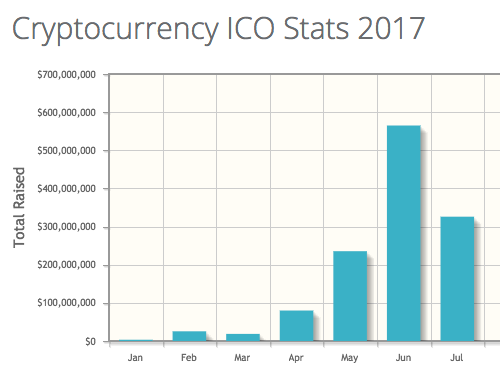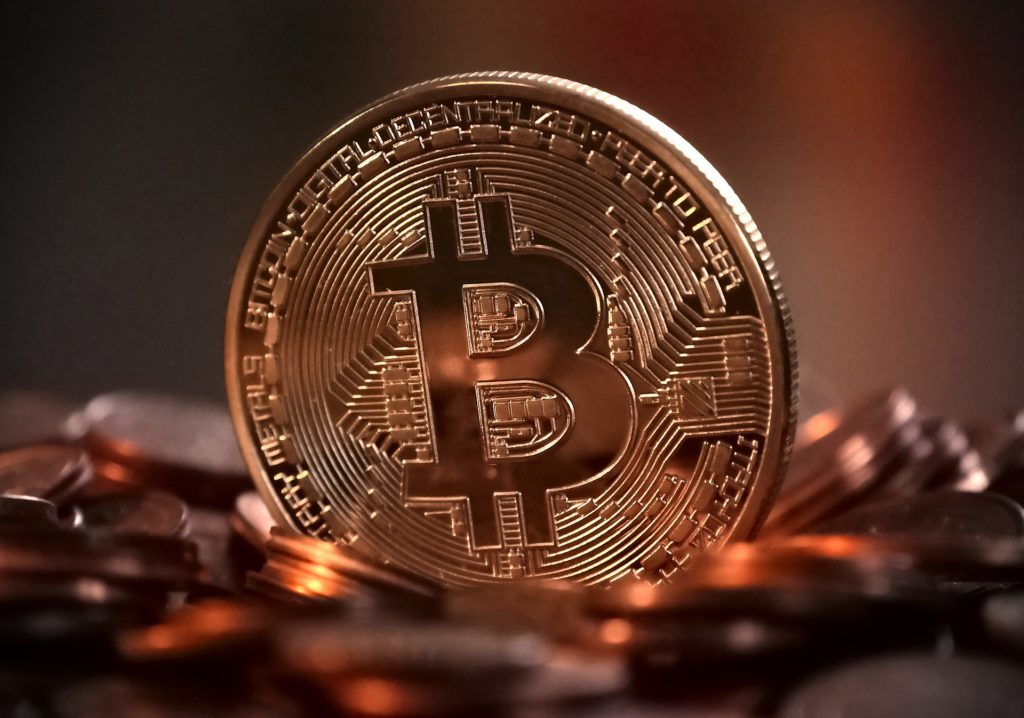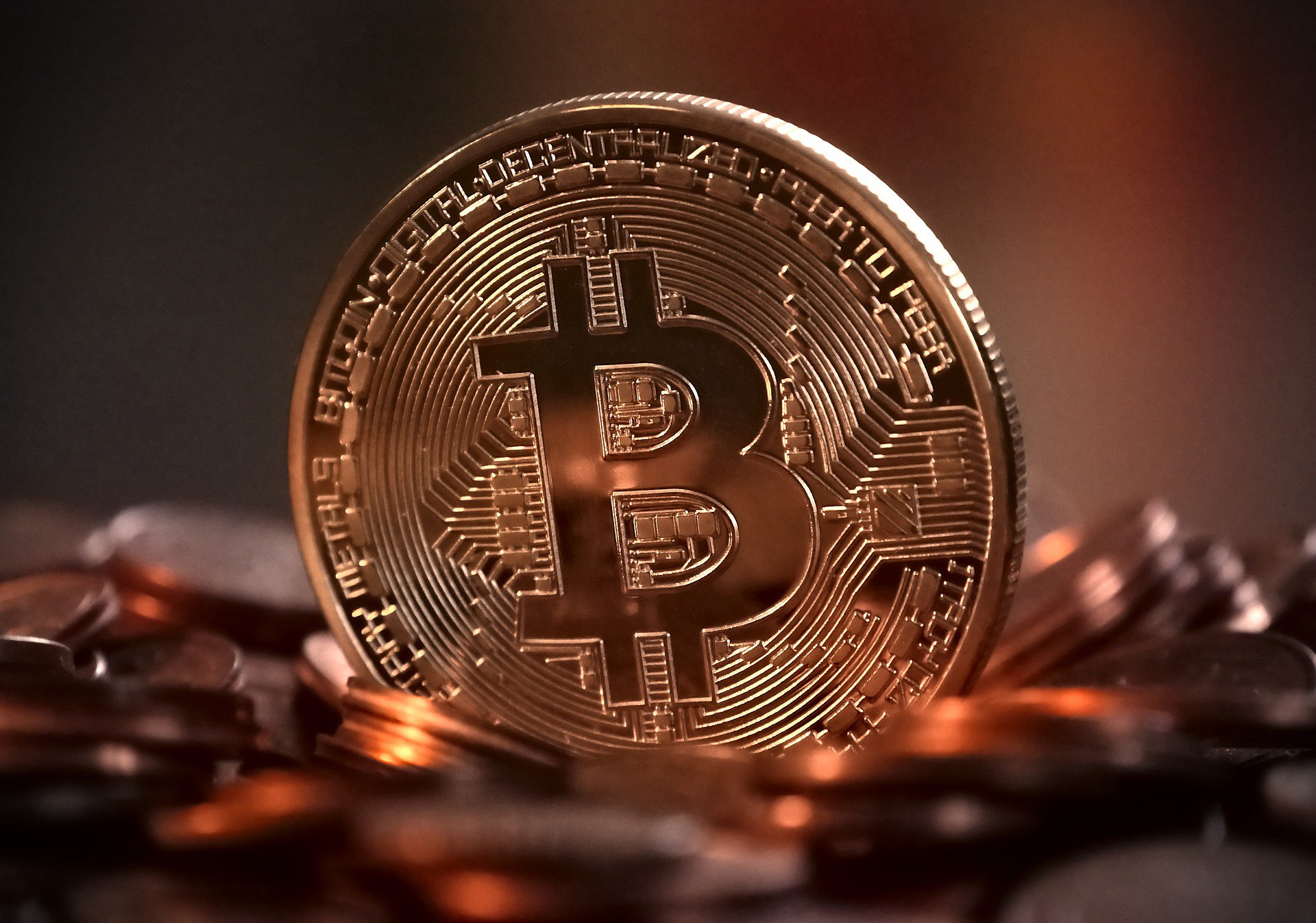Chameleon partner, Lou Kerner, featured a blog on Hackernoon’s website covering the key takeways from the ICO conference call.
On July 27, in partnership with Geektime, we held an hour long conference call with three crypto currency/ICO thought leaders (and over 125 participants.) Speakers talked for 10 minutes about their thoughts on ICOs and then the call was opened for questions from the audience. The replay of the call can be found on Soundcloud below. The slides for the call can be found on SlideShare by clicking here.
Thru July 18th, more than $1.25 billion has been raised in 93 ICOs:

Given the dramatic growth in ICOs (tracking to raise 10X the amount raised in 2016) we held the ICO Conference Call to help people put the moment in to context for investors and entrepreneurs thinking about floating their own ICOs.
The big take away from the call for me was how much the ICO market and the IPO/VC market have in common. That seem is a common thread in the post below which highlights my view of the eight most important points raised on the call:
1. ICO Buyer Base is Evolving, Becoming More Global – Originally, ICOs were largely driven by “whales”, long time holders of Bitcoin and Ethereum who became wealthy via their crypto currency holdings, and wanted to diversify in to other coins. These whales were complimented by smaller buyers, with Coinbase alone having 8.9 million accounts. Many of the smaller ICO buyers are also “natural purchasers”, those who are also buyers or enterprise partners of the protocols, goods or services to be provided to token holders. Finally, as the ecosystem evolves, institutional buyers like Polychain Capital formed for the specific purpose of investing in crypto currency, and forward thinking family offices, have become buyers as well. While the U.S., China and Russia have long been active crypto currency buyers, others countries like Japan, Korea, and India are gaining share.
2. The Kik ICO Is Highly Anticipated, For Good Reason – Kik is an eight year old standalone messaging app that has raised over $120 million from major VCs, including long-time crypto currency proponent Fred Wilson of Union Square Ventures. The last valuation was $1 billion, when WeChat invested $50 million in 2015. While the app has registered over 300 million users, Kik is no longer growing, and has an active user base of only 15 million monthly uniques, primarily U.S. teens.
Kik’s ICO plan is for investors to trade their equity in Kik for for Kin, an open source cryptographic ERC20 token (leveraging the Ethereum platform). Kin will be a general purpose cryptocurrency for use in Kik and other digital services such as chat, social media, and payments. Only a small portion of the Kin supply will become liquid in the near term, with most of the Kin supply is reserved for the Kin Rewards Engine. But the important point is that Kik is the first example of a traditional VC backed company evolving in to a crypto currency backed entity, hoping to benefit from the “token network effects” where user growth is propelled by the value appreciation of the coin economically benefitting the users.
3. The ICO of Today Will Be Could Be The Acquirer of Tomorrow – Another market evolution the panelists see coming is acquisitions being paid for in coins. Soundcloud was given as a potential example where an asset exists that could benefit from “token network effects”. Could a coin be created for the specific purpose of acquiring Soundcloud or another digital asset? Also, what happens when a company that owns a coin gets acquired? Is there a tender offer for the coin?
4. Evaluating ICOs is similar to Evaluating Any Startup, with the Addition of Token Economics – Like with all early stage investing, the team and the technology are paramount. With ICOs, there is is the additional element of the token economics. What are the token network effects? Is it large enough to disrupt an industry? Given the complexities in evaluating ICOs, it’s not surprising that funds are being created to help buyers invest in a pool of ICOs through a “professional”.
5. The Process of Bringing an ICO To Market Is Also Similar To An IPO – An ICO typically takes about three months. Like with an IPO, ICOs have disclosure issues, legal issues and and tax issues that need to be addressed. While ICO white papers are generally quite technical, they are the ICO equivalent of S-1s that need to be filed in IPOs. Like IPOs, ICOs often have detailed global marketing plans including media outreach and public relations. The marketing plans also often include a ground game at conferences and one-on-ones with prominent funds/family offices. There was some discussion on whether the cost of the ICO process is likely to go up, as the scarce resources needed get bid up, or the cost will go down, as we have seen in certain aspects of traditional fundings like setting up a corporation, which has fallen 99% with the availability of free online resources.
6. Significant Non-Dilutive Financing Is A Major Competitive Advantage– While this is obvious, it is important to note the strategic implications for companies that successfully raise money from an ICO. It’s likely the company will be better funded then other young competitors which could be a major advantages in terms of being able to hire faster and hire more talented people. the capital could also be a major advantage in marketing. In addition, the token network effects could be significant. ICOs can also be a big win for the VCs of venture backed ICOs given the ability for quicker liquidity than VCs typically experience.
7. The Terms of ICOs Are Evolving Like The IPO Market – Lockups, tiered pricing, and restrictions on resale are all becoming increasingly popular in ICOs, and are seen as a positive signs of a maturing market.
8. The Recent SEC Announcement Was Positive For ICO The Market – On July 25th, the SEC issued a press release stating that” U.S. Securities Laws May Apply to Offers, Sales, and Trading of Interests in Virtual Organizations”. This was seen as a largely positive step forward by all the panelists. There will be fewer bad apples with the regulators more active in the market. The notice was general seen as being thoughtful, and as important for what it didn’t say as for what it did. Most notably, it appears to leave the utility tokes outside the scope of regulators.




